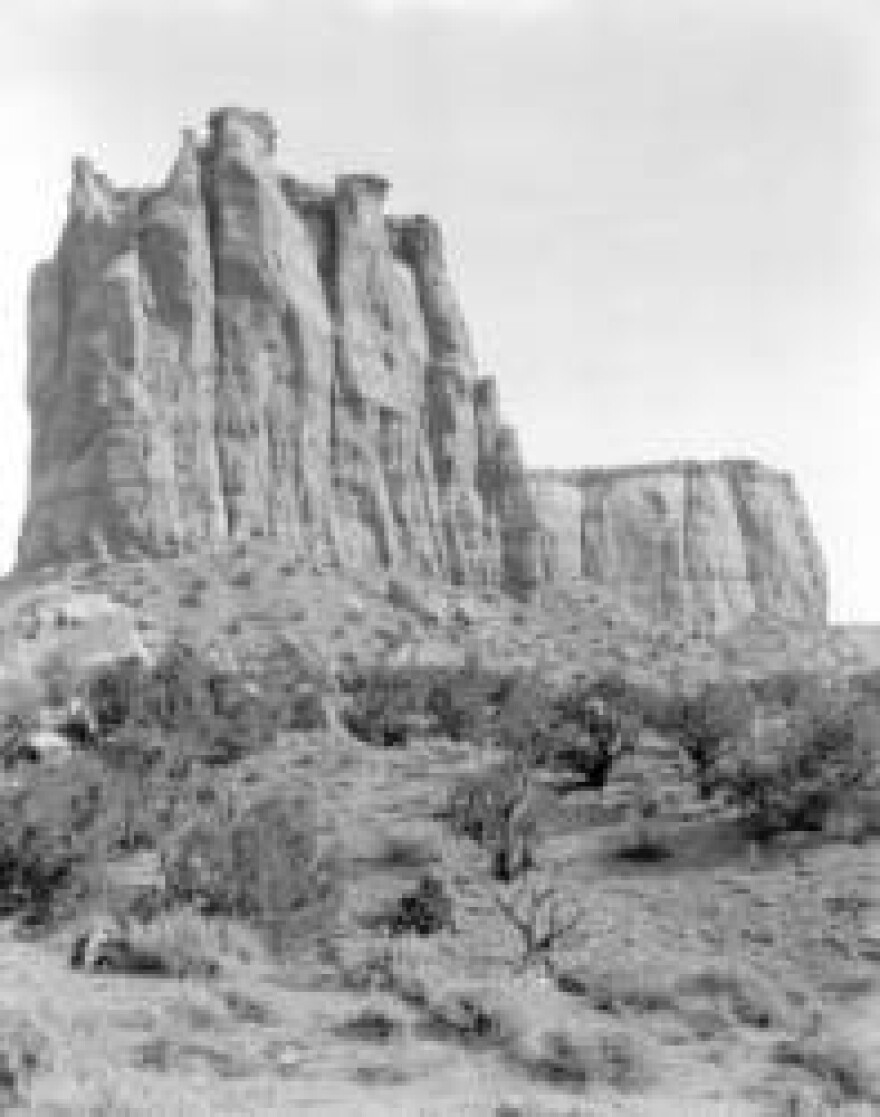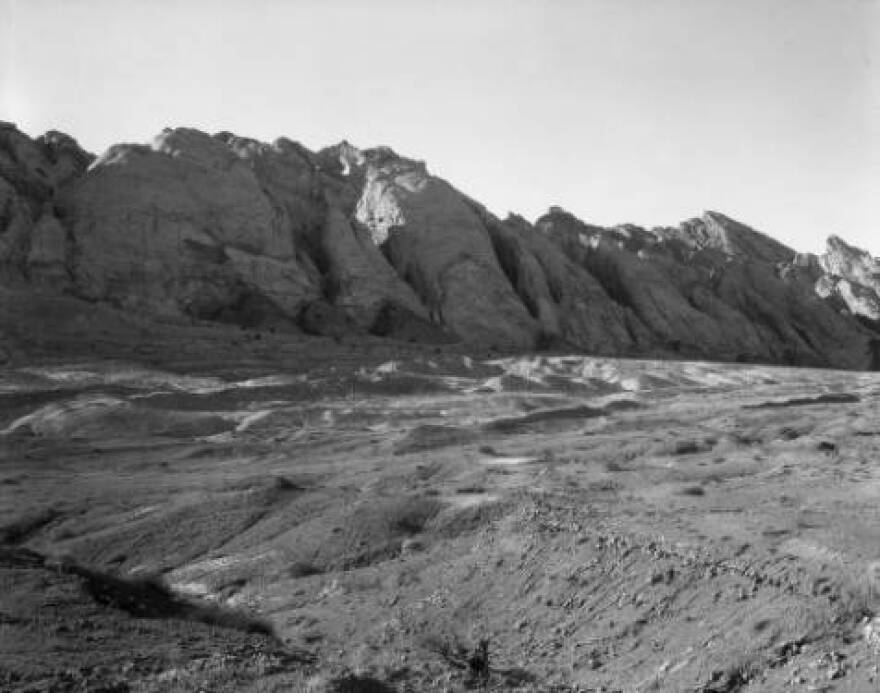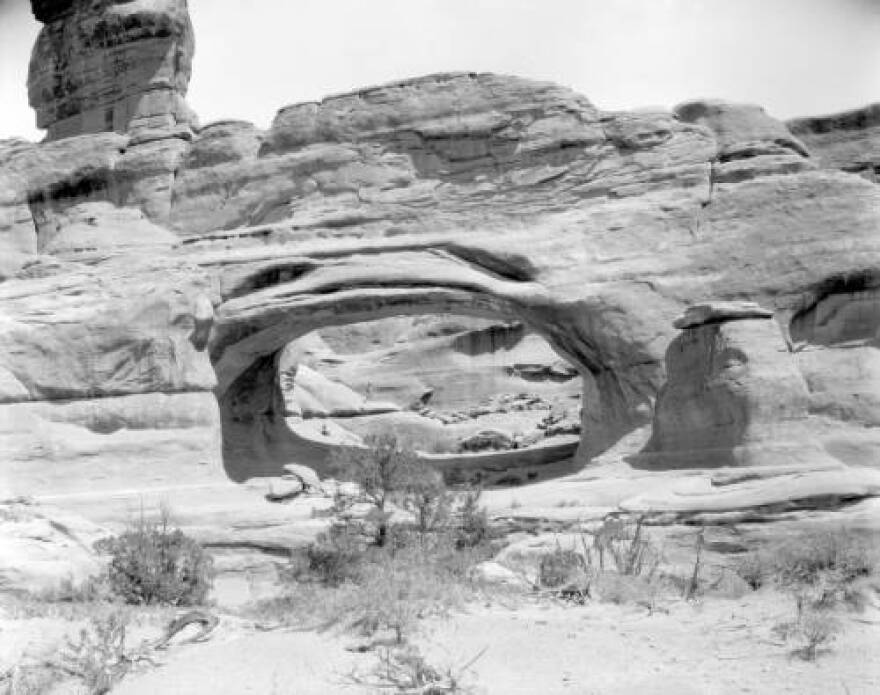Some rare photos of an iconic Southwestern landscape go on display tomorrow in Flagstaff. The Museum of Northern Arizona will showcase the first known photos of Arches National Park in Moab, Utah. Curator David Purcell unearthed them by accident, while researching the park’s history. KNAU's Aaron Granillo went to see some of the black and white images, while Purcell was setting up the exhibit.

Aaron Granillo: So, first I want to know how did you find these pictures? They've never been seen before, so how did you uncover them?
David Purcell: In the usual place. On the internet. We were actually doing some research into the story about how Arches National Park came to be in 1929. And, two clicks later, and I found that the Denver Public Library had scanned all of these images at some point in the past, and they were up on the internet. Where this story really heads though is that nobody at the Denver Public Library understood how these were related to the story of the creation of Arches.
Take me back to the 1920s, when these photos were taken. Nobody outside of Moab really knows anything about this area. Who took the pictures?
Good point, that's an interesting story. In 1922, a mining prospector named Alex Ringhoffer found an enormous arch and a series of pinnacles that we now call the Marching Men. And, Ringhoffer was so impressed that he wrote a letter to a gentleman named Frank A Wadleigh, the passenger traffic manager at the Denver and Rio Grande Railroad. Wadleigh wrote back and said, "Okay. When can we come see them?” And Wadleigh brought a gentleman by the name of George L. Beam. Beam was a professional photographer, and then they spent two days exploring this area, and taking photographs.

And, so when these guys come across it, don’t they call it the Devil’s Garden? Wasn't that their nickname for it at first?
That's correct. Alex Ringhoffer is actually the gentleman who named it. It's not the same Devils Garden that now carries that name. There was an enormous mix up in the process of actually surveying this land. Somehow that name got applied to the ridges on the opposite side of Salt Wash, the area now called Devils Garden. And it stuck.
Okay, so show me what we're looking at here. We have some blue prints of the exhibit, right?
Correct, this is our design for the exhibit, and this exhibit is going to consist of a series of prints from the George Beam photographs. Here we have an image from 1923 of Tower Arch, and this is actually one of the largest arches in the whole area. And in addition, most of these images have within them -- if you can look closely – some of the participants in this expedition. So here we have Alex Ringhoffer. These guys all have the classic 1920s fedora hats, jodhpurs, lace-up boots. They all look like Indiana Jones even though none of them are actually archaeologists.

Okay, so they take these photos, and what happens next?
That's an interesting story. Now, part of the reason that no one has ever seen these photographs is that Wadleigh sent them with a letter to Stephen Mather, the head of the National Park Service, and said, "This place is amazing. You have to make it into a national monument.” And, Mather immediately began to do exactly that, but he never publicly displayed these photographs. He circulated them privately to some important people in New York and Washington DC. Behind the scenes, at the moment, the administration at the time was extremely hostile to new parks. In fact, they were looking to disband the Park Service and give all the national parks to the states. So, he simply bided his time until Herbert Hoover was elected. Within three months of his election in 1929, they proclaimed Arches National Monument.
So his is the first time these photos will be on display inside of a museum. As the curator, how do you envision the exhibit and what do you want the public to get out of it?
Well, we want to actually make sure that the photographs that were part of this proclamation and part of this expedition are actually finally reunited with the whole story of how Arches came to be.


